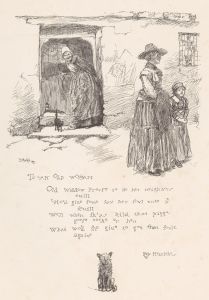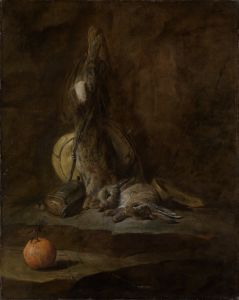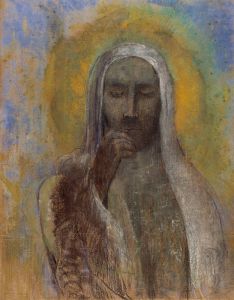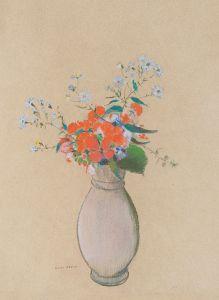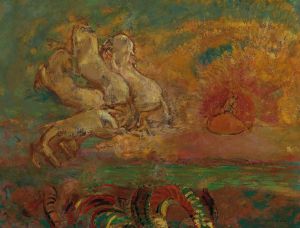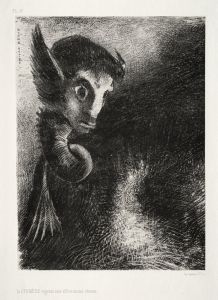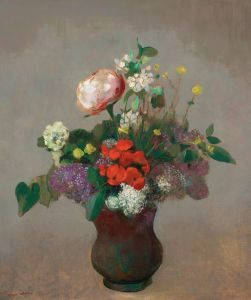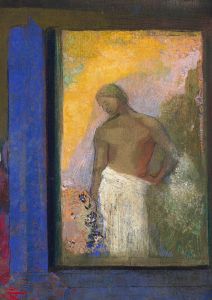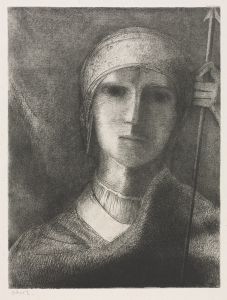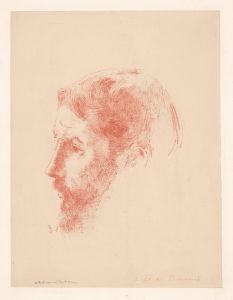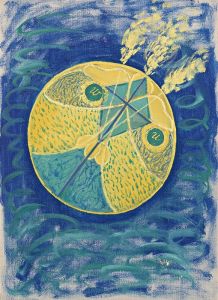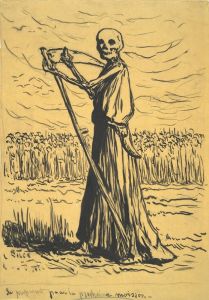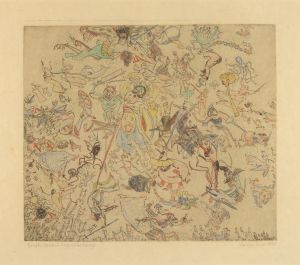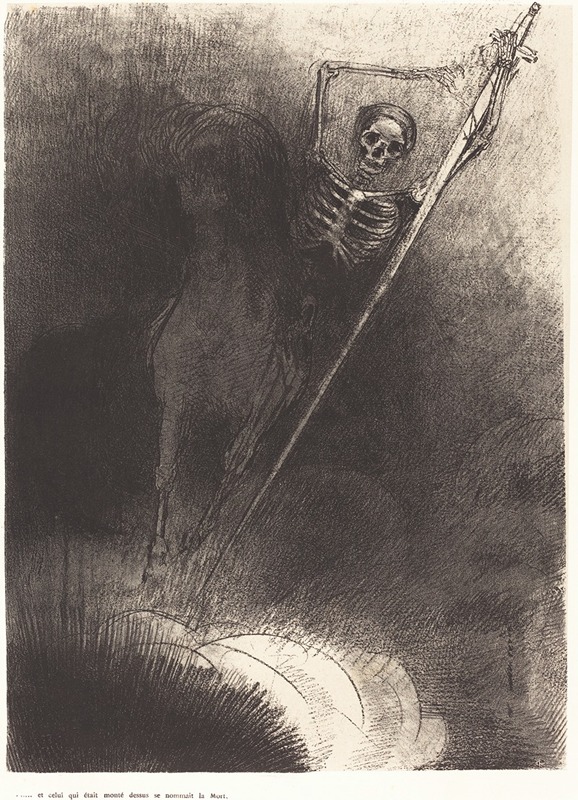
Et celui qui était monté dessus se nommait la Mort
A hand-painted replica of Odilon Redon’s masterpiece Et celui qui était monté dessus se nommait la Mort, meticulously crafted by professional artists to capture the true essence of the original. Each piece is created with museum-quality canvas and rare mineral pigments, carefully painted by experienced artists with delicate brushstrokes and rich, layered colors to perfectly recreate the texture of the original artwork. Unlike machine-printed reproductions, this hand-painted version brings the painting to life, infused with the artist’s emotions and skill in every stroke. Whether for personal collection or home decoration, it instantly elevates the artistic atmosphere of any space.
Odilon Redon was a French symbolist artist known for his unique and imaginative works that often explored themes of dreams, fantasy, and the subconscious. One of his notable works is "Et celui qui était monté dessus se nommait la Mort," which translates to "And the one who sat upon it was called Death." This artwork is part of Redon's exploration of dark and mysterious themes, which were prevalent in his oeuvre.
Redon was born on April 20, 1840, in Bordeaux, France. He initially studied architecture but later turned to painting and drawing, finding inspiration in the works of Eugène Delacroix and the writings of Edgar Allan Poe. Redon's early works were primarily in black and white, using charcoal and lithography to create haunting and atmospheric images. These pieces, often referred to as his "noirs," are characterized by their deep contrasts and ethereal quality.
"Et celui qui était monté dessus se nommait la Mort" is a part of Redon's series of works that delve into the themes of death and the macabre. The title itself is a direct reference to the biblical Book of Revelation, which describes the Four Horsemen of the Apocalypse, with Death being one of them. This connection to apocalyptic imagery is a recurring motif in Redon's art, reflecting his interest in the mystical and the otherworldly.
The artwork is executed in Redon's signature style, blending elements of symbolism and surrealism. Redon's use of color in his later works, including this piece, marked a departure from his earlier monochromatic style. He began to incorporate vibrant hues and pastels, creating a dreamlike quality that enhanced the fantastical elements of his subjects. This transition to color allowed Redon to explore new dimensions in his art, adding layers of meaning and emotion.
Redon's work was influenced by a variety of sources, including literature, music, and philosophy. He was particularly drawn to the writings of Charles Baudelaire and Stéphane Mallarmé, whose symbolist poetry resonated with his artistic vision. Additionally, Redon's interest in the natural sciences and his fascination with the microscopic world often found expression in his art, as he sought to depict the unseen and the mysterious.
Throughout his career, Redon's work was met with both admiration and criticism. While some contemporaries appreciated his innovative approach and the depth of his imagination, others found his themes unsettling. Despite this, Redon's influence on the art world was significant, and he is considered a precursor to the surrealist movement that emerged in the early 20th century.
"Et celui qui était monté dessus se nommait la Mort" exemplifies Redon's ability to merge the real with the fantastical, creating a visual narrative that invites viewers to explore the boundaries between life and death, reality and imagination. His work continues to captivate audiences with its enigmatic beauty and profound symbolism, securing his place as a master of symbolist art.






